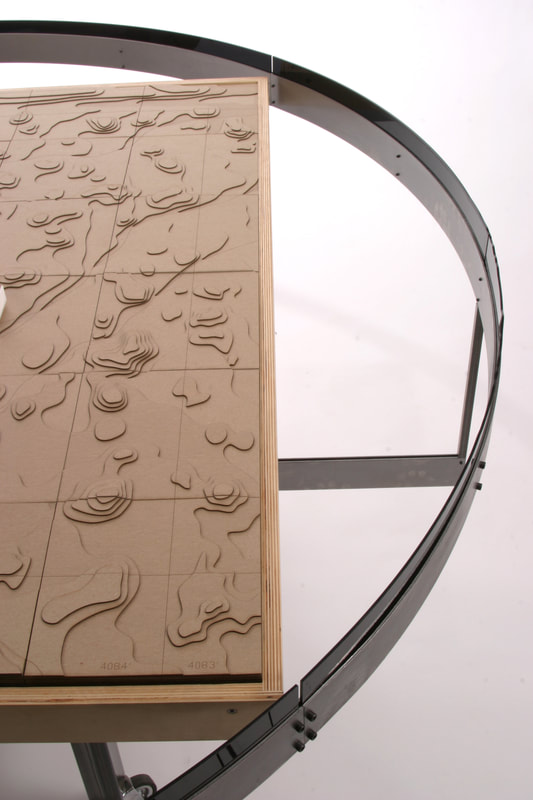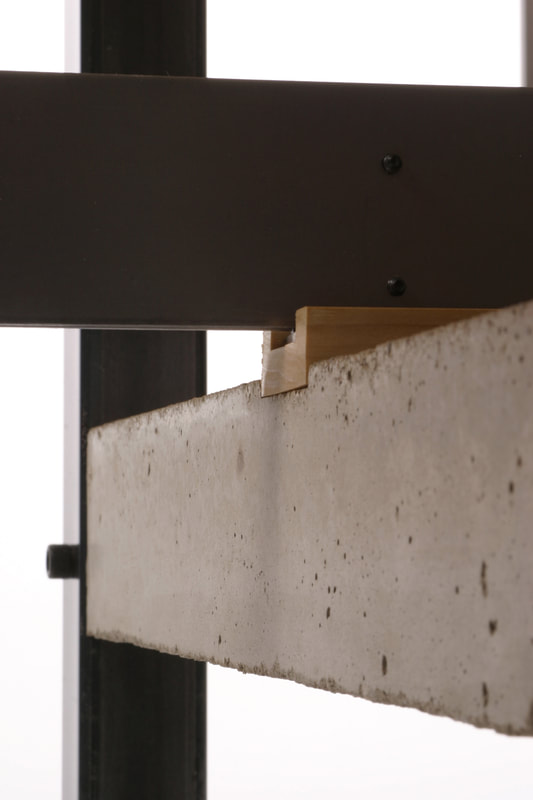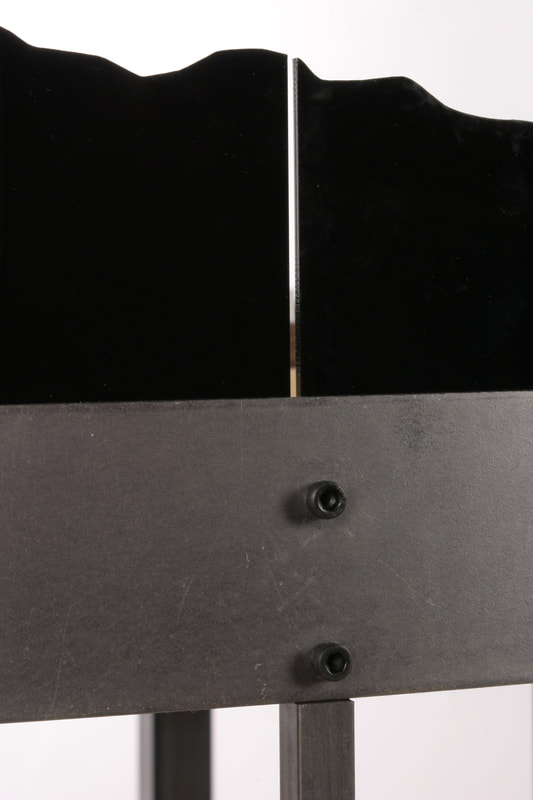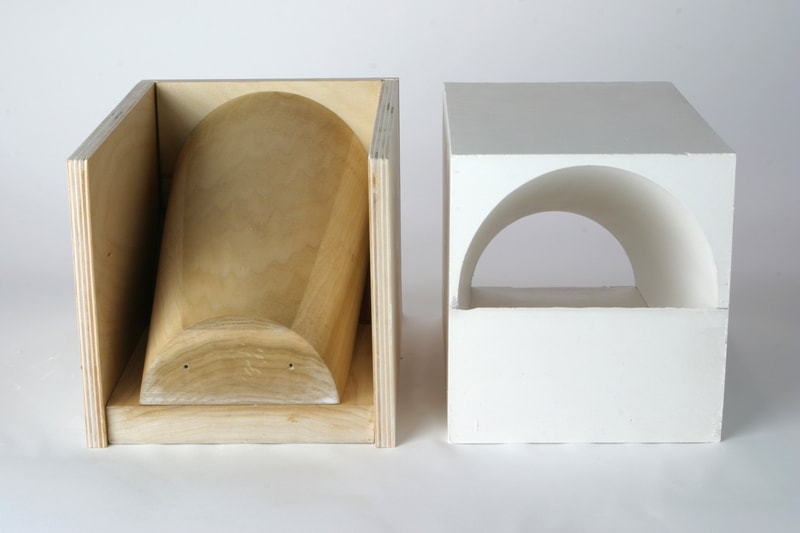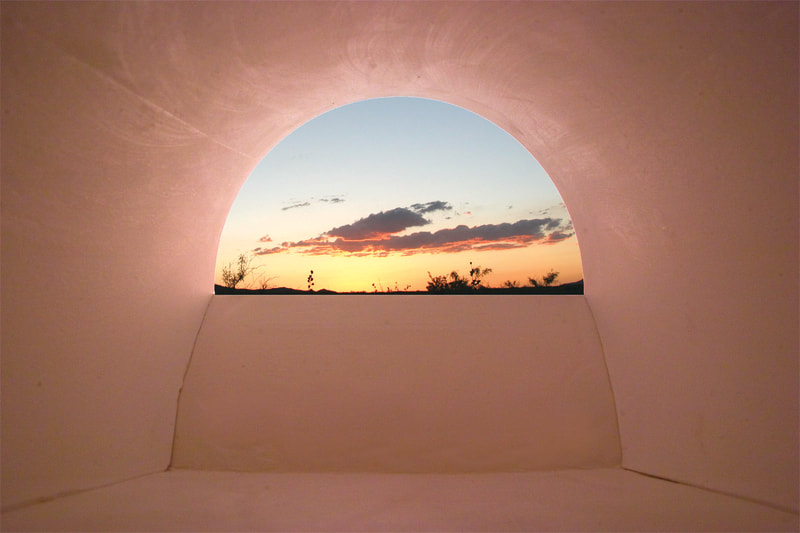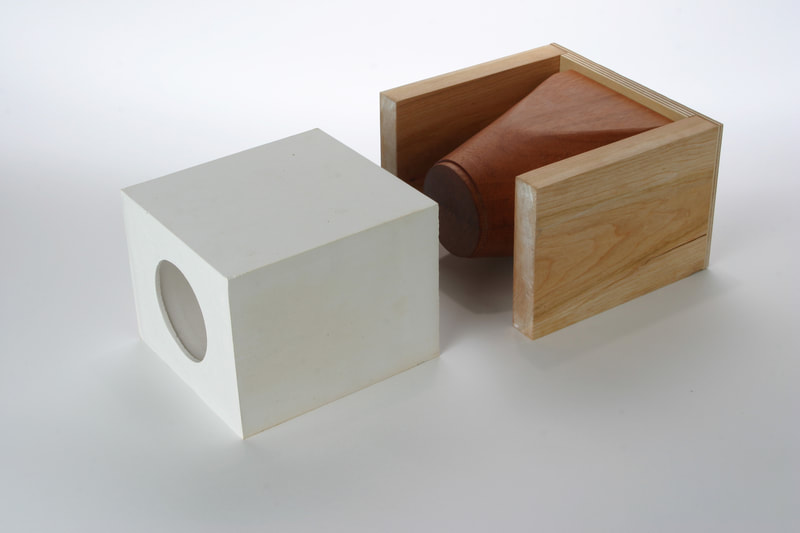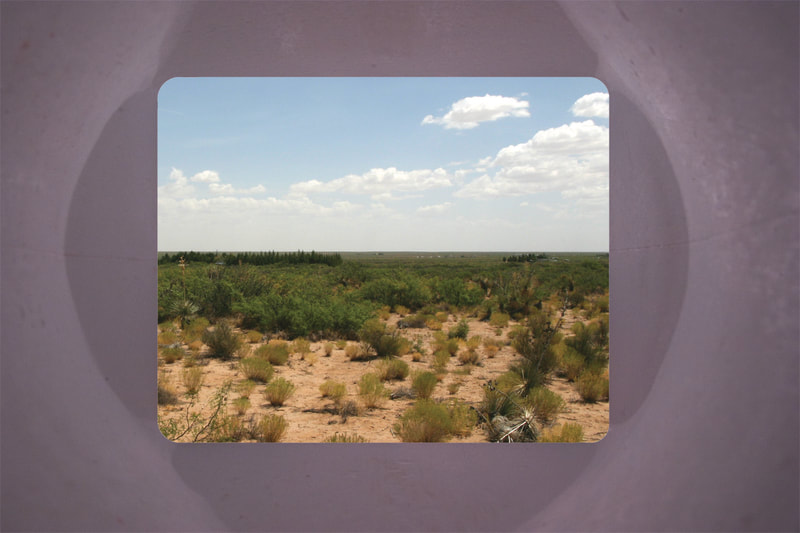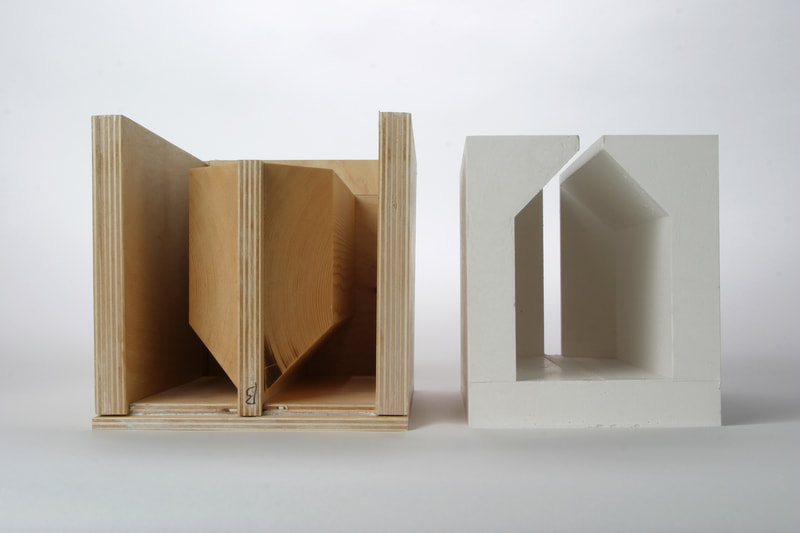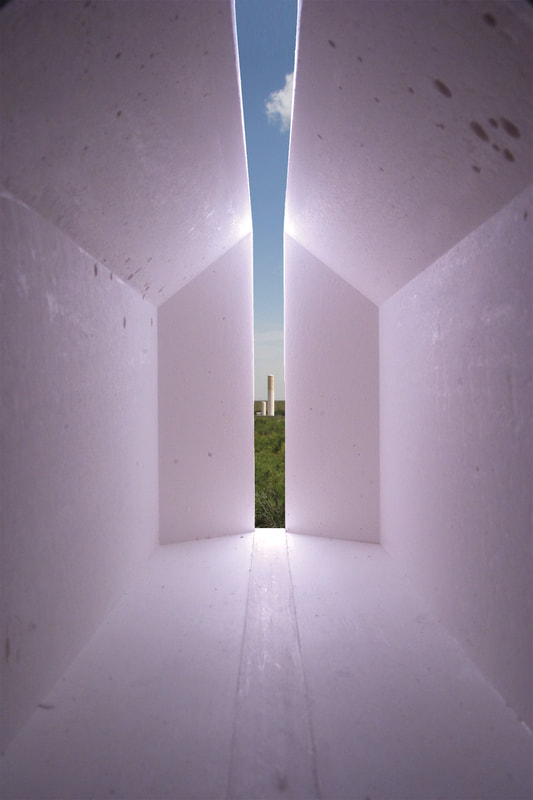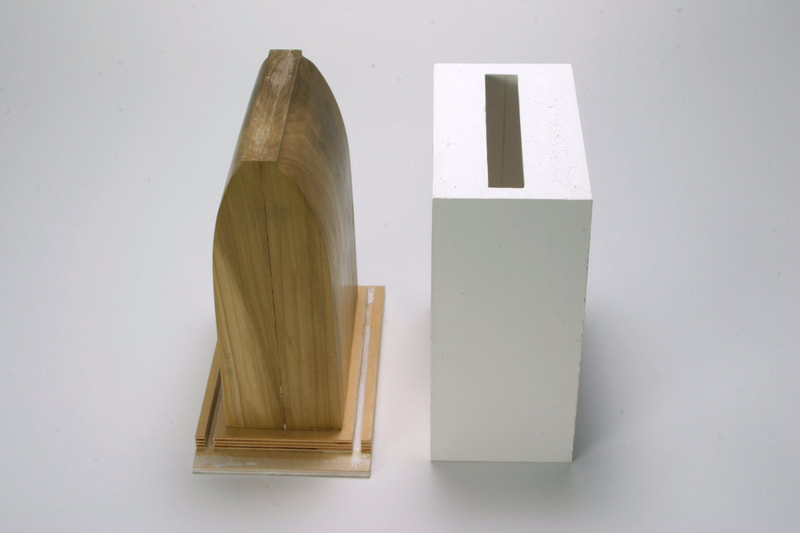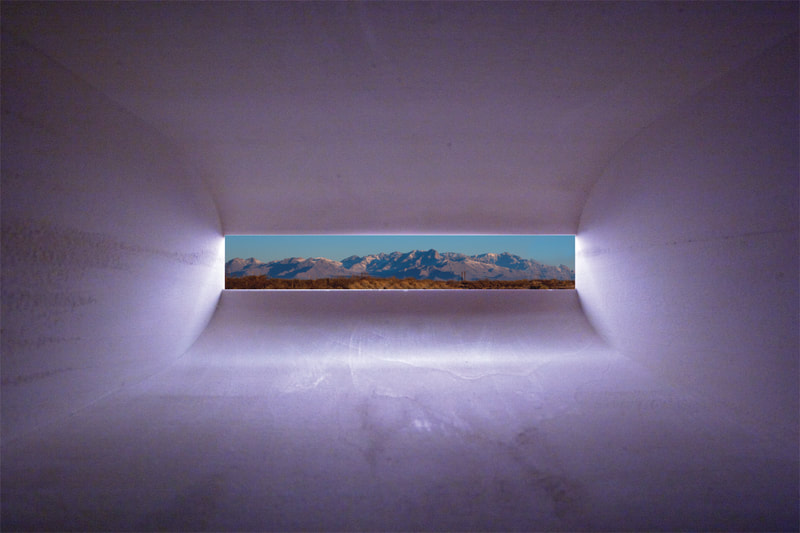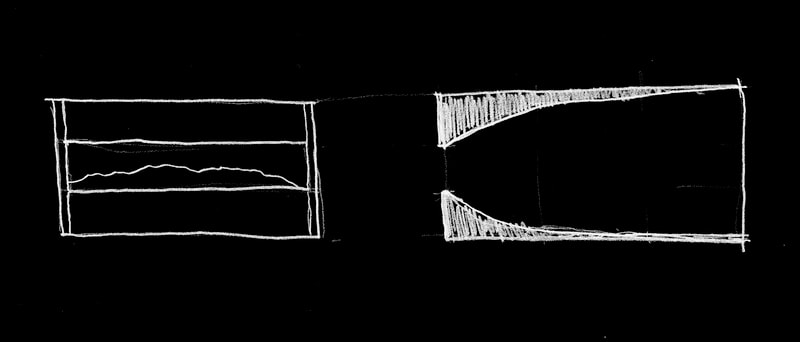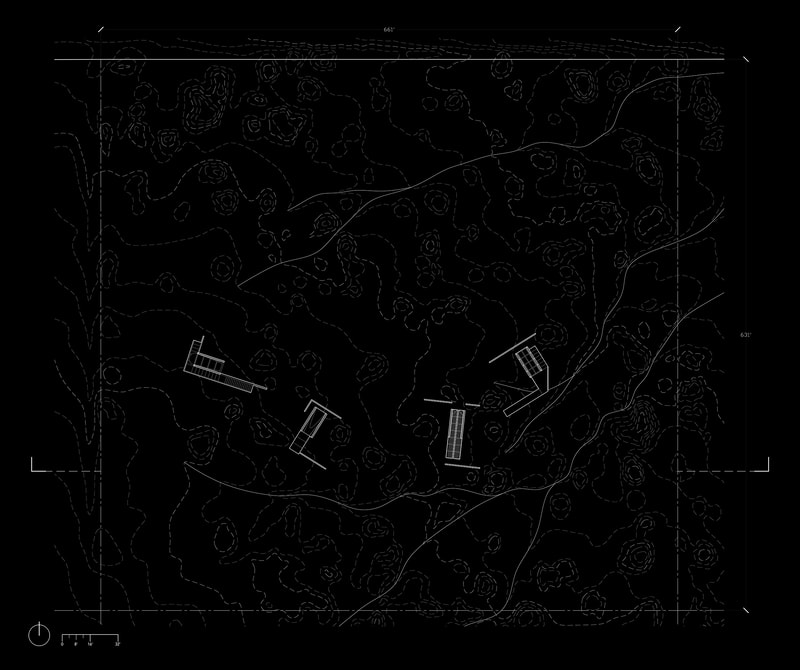NUMINOUS SPACE - Towards an Architecture of Contemplation
|
Numinous Space is a theoretical project that rethinks the typology of contemplative space in a proposal for an introspective environment that endeavors to connect the spirit of its inhabitant with the Genius Loci, or ‘Spirit of Place.’ The project focuses on a ten acre Chihuahuan Desert site located halfway between El Paso, Texas and Las Cruces, New Mexico where the Jeffersonian grid—a rational yet arbitrary mark of man—is placed over a radically irrational landscape.
The term “Numinous” was originally conceived in 1917 by philosopher of religion, Rudolf Otto who used the term to signify the concept of a “holy” or “sacred” moment, minus its rationality and the implication of “the morally good.” Otto would further analogize the two notions of the numinous and the romantic sublime saying that if they were not the same then certainly the numinous could excite or be excited by the sublime. “the sublime exhibits the same peculiar dual character as the numinous; it is at once daunting, and yet again singularly attracting, in its impress upon the mind. It humbles and at the same time exalts us, circumscribes and extends us beyond ourselves, on the one hand releasing in us a feeling analogous to fear, and on the other rejoicing us.”1 This trajectory of aesthetic philosophy provides a foundation for the employment of the sublime as a unitarian device to enable a metaphysic connection between the human spirit and designed space. Recent neuropsychologic research into the mystical practices of Buddhism and Christianity, has additionally provided an understanding of how the numinous/sublime experience is hard wired within the human brain.2 This knowledge affords insight into the manner in which the built environment participates in affecting a spiritual milieu. Numinous Space is an exploration into the conceptualization of space that engages the subconscious transcendent human condition, suffusing contemporary architecture with a renewed dimension of spirituality. Specifically Numinous Space proposes four independent volumes which act as metaphoric view cameras. Each volume engages an optical phenomena particular to the desert site—enveloping the occupant in contemplative repose. These insertions, spread across the site: speak to each other, to the landscape, and humankind’s mark upon it. Each offers an individual experience, drawing the person intentionally to a specific time and place. Like the monks cell, they offer a compact, ritualistic space of singular program—an engagement with the irrational sublime. Stylistically, the work is minimal in nature, seeking a clean and refined connection between the built work and the material culture of its context. The nexus of the work occurs at the intersection of architecture and the image where I endeavor to critically evaluate the role of the still and moving image in the practice of architecture. It was the symbiotic time and spatial components of the photographic imagination that first compelled me to push my work into the third dimension. Architecture is rarely experienced in the manner in which it has been traditionally conceived, proposed and represented—from the singular, iconic, static viewpoint. Architecture is brought to life experientially in a narrative progression through and around it. Existentially, it is through this indexical process that we know and respond to our built environment. CAMERA|S|PACE The project proposes a series of independent volumes to be placed into the landscape which act as metaphoric cameras–capturing the optical phenomena arrayed in the vistas before them. Rather than produce a photograph of the phenomena being engaged, each insertion provides a space where the occupant inhabits the space of the focal plane. The concepts were first explored in plaster casts to produce pure volumetric space at a quarter inch scale. The castings function as scale optical devices facilitating the evaluation of the performance of the same space at full scale. Like cameras, they focus with specificity on particular phenomena, producing an ephemeral experience of sublimity for the inhabitant. Afterglow: The atmospheric glow that may appear above the highest clouds in the hour of deepening twilight due to very fine particles of dust suspended in the high regions of the atmosphere. Afterglow scoops and reflects the phosphorescent orange light of evening twilight down into the space’s interior. The orange luminescence is set off against the deep cobalt blue of the sky at the top front edge of the vault’s roof line. The space is experienced at sunset and twilight (5-8p) depending on the time of year. Mirage: An optical phenomenon by which the image of an object appears displaced above, below, or to one side of its true position as a result of spatial variations of the index of refraction of air. Mirage speaks to the purity of the horizon on a plain of vast extent. The refraction of that line is isolated with the effects of mirage during the hottest hours of the day (2-4p). Within the space, the viewer is confronted with only two lines: The edge of the space itself, and the horizon. Skylight: Atmospheric perspective caused by diffuse sky radiation; solar radiation reaching the earth’s surface after having been scattered from the direct solar beam by molecules or suspensoids in the atmosphere. Skylight sets up a vertical cut through the site corresponding to a strong vertical on the horizon to the north. The experience is complete only at midday (11a-1p) when the vertical slice is continued across the floor by the ray of sunlight cast through the slit in the roof. Alpenglow (Alpenglühen): An optical phenomenon often seen on the summits of mountains which receive the scattered red light from the sun just before sunrise or just after sunset. Alpenglow sets up a foreshortened condition which flattens the perceived distance between the neighboring man-made elements and the distant Organ mountains. The space is experienced from twilight to sunrise (4-7a) when alpenglow reflects off both foreground and background elements in the clear morning air. 1. Otto, Rudolf. The Idea of the Holy; An Inquiry into the non-rational factor in the idea of the divine and its relation to the rational. Second Ed. John W. Harvey, Trans. London: Oxford University Press. 1917, 1950. p.5-6. 2. d’Aquili, Eugene. Newberg, Andrew B. The Mystical Mind; Probing the Biology of Religious Experience. Minneapolis: Fortress Press. 1999. p. 102. |
Project Facts Location: Chaparral New Mexico Year: 2006-2007 Numinous Space is the thesis work of In*Situ Architect William Helm, AIA. The theoretical project utilized a ten acre site of unspoiled Chihuahuan Desert plain on the grounds of Desert Rain Community in Chaparral, New Mexico to study the design and creation of numinous spaces. Numinous Space was published in Dimension Vol.12, 306090 Books and was awarded an AIA Honor Award as a Studio Project in 2010. As an introductory exercise in design and analysis, Architect William Helm built a primitive desert hut (pictured above) and then proceeded to live, observe, and document the site from within it for several of days. During the days of habitation a record of experience was kept with hourly entries. Each hour a written entry consisting of observations on the site and/or the experience within the hut was recorded. To accompany the written entries, observational photographs were taken from within the hut and site. The observations gathered from the habitation on site served to inform the design work in the studio that followed over the next several months. The theory and designs that proceeded are outlined briefly here. Listen to the Numinous Space podcast at THERUINED. Special thanks to Desert Rain Community for your partnership in this speculative project! Award: AIA Design Award – Honor Award, 2010 |


